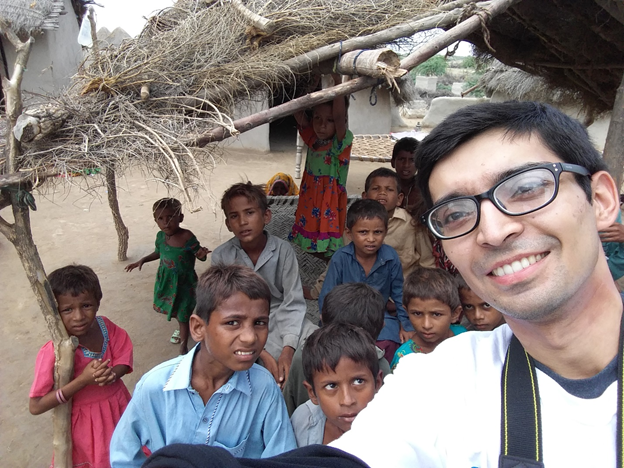
Hassaan Idrees, 2014-2016, Pakistan (right) taking a selfie with kids from the village of Revi ji Dhani, excited to see lightbulbs which will allow them to play and study until late in the evenings.
Hema, an eight-year-old girl, is one of five siblings living in the village of Revi ji Dhani, located close to the Mirpurkhas-Umerkot highway, a perennially drought-ridden area in Pakistan. Every day, she wakes up before the crack of dawn to fetch water from a hand pump at a distance of two miles. It is a winding, nasty route that she has to maneuver in the dark, for there are no streetlights, and snakes and wild dogs run amok in the desert bushes. Panting and sweating on her return, she has to get ready to go to a dilapidated public school situated a mile away. Hema has trouble finishing her homework under the grim gaslight at home: it’s inadequate, expensive, and dangerous. As her father runs a small store in the village, however, she is one of the fortunate few to actually attend school; the vast majority of children in Revi ji Dhani have to assist their families with herding cows or woodcutting to make ends meet.
Hema belongs to an unbelievably impoverished community: more than 46% of people in the Umerkot district, with a population of more than 700,000, live with less than $1.90 a day. Rural female literacy is less than 10% in this district. Access to the grid is limited to the main town and larger villages, and still suffers from daily blackouts. Smaller villages and hamlets have power outages for as long as 18 hours a day or are not connected to the grid at all. With little or no power, the local economy suffers, and life is tough.
